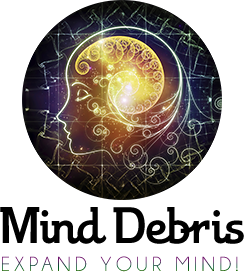New Alkaloids Found in Magic Mushrooms
[Please note that this page contains affiliate links. If you choose to purchase after clicking a link, I may receive a commission at no extra cost to you.]
A study published recently had found beta-carboline MOAI alkaloids inside magic mushrooms.
These alkaloids are the vital psychoactive mechanisms of the Syrian rue and ayahuasca vine, two honoured plants with a long history of healing and religious purposes.
Magic Mushroom Alkaloids
There were four types of mushroom species that were looked at under the microscope.
The alkaloids found consisted of the beta-carboline alkaloids harmane and harmine and a precursor to psilocybin, compounds norpsilocin, baeocystin, and norbaeocystin.
The foundation of the compounds is an amino acid called tryptophan, which is the precursor to serotonin in mushrooms and humans.

The Compounds Importance
The beta-carboline compound levels were incredibly low, at levels that were less than two micrograms per gram of P. Mexicana mycelium (psilocybin mushroom).
Someone would have to take 5-8 micrograms of harmine and a 2–5-grams dose of mushrooms. However, the amount of harmane to be adequate is around 50 milligrams. So that dose size is about 10,000-fold bigger than that in the psilocybin mushroom.
The P. cubensis mushrooms had a 100-fold more minor concentration than the P. Mexicana mycelium. It would be 100,000th of the typical beta-carboline dose, so it is impossible to affect the mushroom trip.
Researchers are baffled by these compounds’ role in certain fungal species. Similarly, it is a big mystery as to the purpose of psilocybin in some mushrooms.
In terms of the evolutionary timeline, psilocybin has recently shown up in mushrooms, somewhere between 10-20 million years ago.
One of the leading hypotheses is that psilocybin might be an insect repellent for the fungi.
Some recent research by mycologists in London at Kew Gardens has serious doubt that psilocybin acts as an insect repellent. For example, those fungus gnats (insects that eat fungal material) are not harmed when eating psilocybin mushroom material. Therefore, instead of insect repellent, maybe psilocybin is acting as an attractant?
Beta-Carbolines Alkaloids
Some species, like P. semilanceata and P. azurescens, can have relatively high concentrations of baeocystin, which is an analog of psilocybin.
As of now, there is no research in humans using baeocystin. The very few reports show to be very contradictive, where some people report activity in low dosages, and others have reported no effects.
The mushroom species P. semilanceata contain different amounts of phenylethylamine, an alkaloid found in trace amounts naturally in humans, and in higher concentrations, it acts as a stimulant.
The mushroom inocybe aeruginascens may contain about equal amounts of psilocybin, baeocystin, and the compound aeruginascin.
Fortunately, there is yet to be a single case of any terrifying or uncomfortable trips connected to taking this type of mushroom, even in the situation of accidental consumption.
Some scientists have considered that there could be some backup effect going on through these several compounds in the fungi that would not be there if using synthetic psilocybin.
While studies using pure psilocybin are making significant progress, researchers examining whole psilocybin mushrooms are outdated and neglected. In Jamaica, the first research center on magic mushrooms soon to be open may help to change this.

